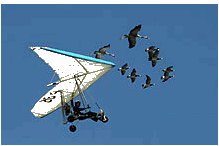
ドイツ語ではPrägung。
浮き彫り/エンボス加工(embossment)、型押し、鋳造、鋳貨などの意味があります。型に押し込むことで、この場合は、英語でimprinting(刷り込み)と訳されています。生まれたばかりの動物がそこにいる動物を親と認識して、親の行動をまねて行動様式を学ぶことです。もし鴨の親がいなくなって代わりに人間がそばにいると人間のあとをついて回って人間の行動をそっくりまねします。人間は飛べませんから、飛ぶことを教えるのは大変です。
Konrad Lorenz (7 November 1903--27 February 1989) was an Austrian zoologist, thologist. and ornithologist. He shared the 1973 Nobel Prize in Physiology or Medicine with Nikolaas Tinbergen and Karl von Frisch. He is often regarded as one of the founders of modern ethology. he study of animal behaviour. He developed an approach that began with an earlier generation, including his teacher Oskar Heinroth. Lorenz studied instinctive behavior n animals, especially in greylag geese and jackdaws. Working with geese, he investigated the principle of imprinting, the process by which some nidifugous birds (i.e. birds that leave their nest early) bond instinctively with the first moving object that they see within the first hours of hatching. Although Lorenz did not discover the topic, he became widely known for his descriptions of imprinting as an instinctive bond. (https://en.wikipedia.org/wiki/Konrad_Lorenz)
私たちの言語も親の言語行動のマネをしますので、刷り込みがあります。
|
All rights reserved by Etsuo Kobyashi: since November 18th, 2017 [total] |
Amazon 
|